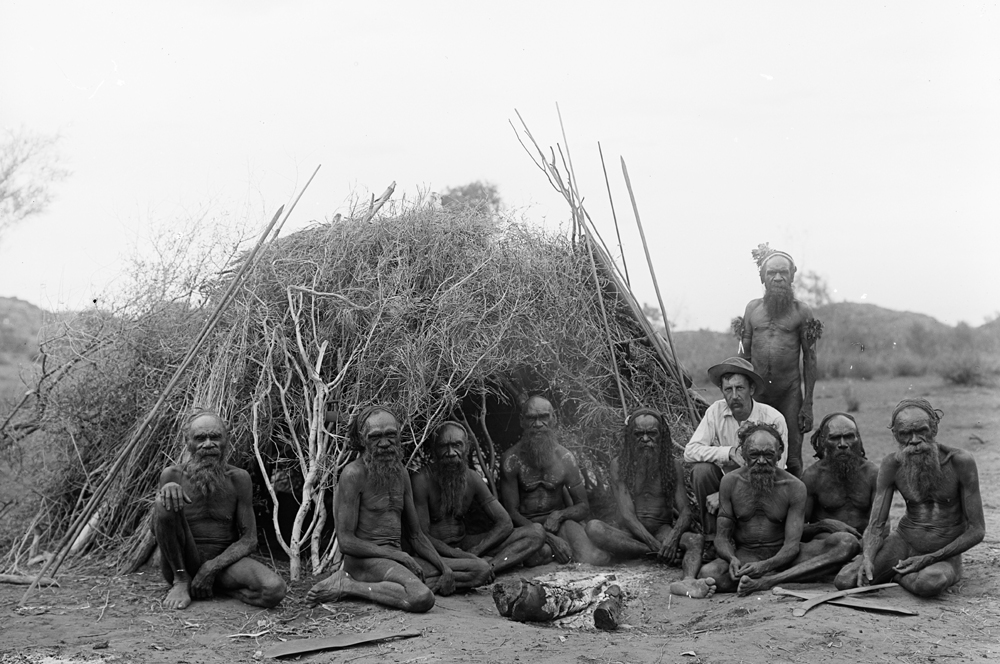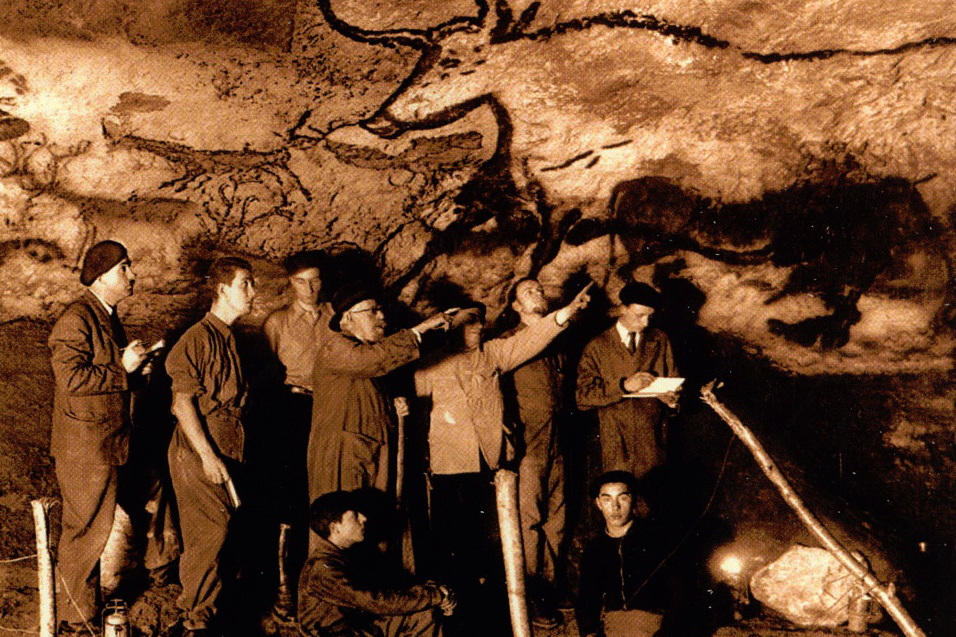


Rock art theories: a brief overview of the salient theories concerning Palaeolithic rock art in Europe and around the world.
Hunting Magic
In the early 1900's, the theories concerning rock art were known as 'utilitarian', triggered by the work of Walter Baldwin Spencer (below) and Francis J Gillen on the Arunta of Central Australia. This was endorsed by the likes of Salomon Reinach, Henri Breuil - Abbé Breuil - and Count Bégouën.
The theory stated that the Palaeolithic paintings had a magic-religious cause; by painting the animals it would multiply their numbers. 'Hunting magic' was associated with 'sympathetic magic' whereby an act would influence reality. This utilitarian approach was unashamedly functional, linking the art to the supply of food.

Walter Baldwin Spencer with Arunta elders of Central Australia in 1896
The theory gradually became more elaborate; by painting or carving the animal the artist would gain the strength of that animal, or even be protected by it. Or perhaps it was a form of trophy; look what I have killed. It might also have been a method of mental preparation for the hunt.

Abbé Breuil and Count Bégouën visiting Lascaux in 1940
But with these 'hunting' explanations came the need - and desire - to prove them. Did they stack up? Analysis showed that the Palaeolithic diets, based on faunal bones found near the rock art sites, did not really reflect the animals depicted. For example at Lascaux, 90% of the bones were from reindeer, but there is only one painting of the reindeer.
Researchers accepted that some elements of the hunting magic theory were legitimate, but it certainly didn't explain everything; it was too simple given the complexity and variety of the compositions and further explanations were sought.
Visit the Lascaux section:
www.bradshawfoundation.com/lascaux/index.php
Visit the Australian Rock Art Archive:
http://www.bradshawfoundation.com/bradshaws/index.php
by Bradshaw Foundation
Monday 04 December 2023
by Bradshaw Foundation
Friday 30 June 2023
by Bradshaw Foundation
Thursday 06 April 2023
by Bradshaw Foundation
Thursday 24 November 2022
by Bradshaw Foundation
Tuesday 27 September 2022
by Bradshaw Foundation
Thursday 08 September 2022
by Bradshaw Foundation
Tuesday 19 July 2022
by Bradshaw Foundation
Monday 06 June 2022
by Bradshaw Foundation
Friday 11 March 2022
by Bradshaw Foundation
Wednesday 02 March 2022
by Bradshaw Foundation
Thursday 26 August 2021
by Bradshaw Foundation
Monday 16 August 2021
by Bradshaw Foundation
Tuesday 06 July 2021
by Bradshaw Foundation
Thursday 06 May 2021
by Bradshaw Foundation
Thursday 06 May 2021
by Bradshaw Foundation
Tuesday 16 March 2021
by Bradshaw Foundation
Monday 04 December 2023
by Bradshaw Foundation
Friday 30 June 2023
by Bradshaw Foundation
Thursday 06 April 2023
by Bradshaw Foundation
Thursday 24 November 2022
by Bradshaw Foundation
Tuesday 27 September 2022
by Bradshaw Foundation
Thursday 08 September 2022
by Bradshaw Foundation
Tuesday 19 July 2022
by Bradshaw Foundation
Monday 06 June 2022
by Bradshaw Foundation
Friday 11 March 2022
by Bradshaw Foundation
Wednesday 02 March 2022
by Bradshaw Foundation
Thursday 26 August 2021
by Bradshaw Foundation
Monday 16 August 2021
by Bradshaw Foundation
Tuesday 06 July 2021
by Bradshaw Foundation
Thursday 06 May 2021
by Bradshaw Foundation
Thursday 06 May 2021
by Bradshaw Foundation
Tuesday 16 March 2021
Friend of the Foundation











